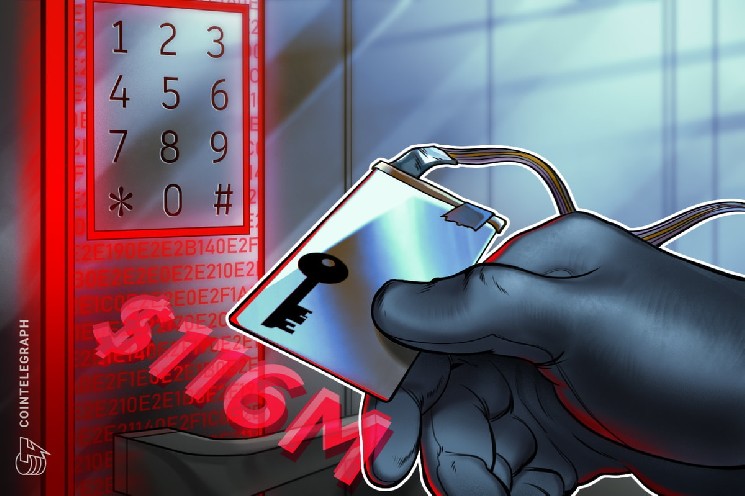Author: @0xWilsonWu
I finally managed to catch my breath. Over the past few days, I've carefully reviewed my assets and plans. My inbox and comments section have been flooded with questions. Some are concerned about the progress of Honeypot, some are asking about market conditions, but most are simply curious: "What exactly have you been through these past four years?"
So, I decided to write this long article. There are no secrets to wealth, no inspirational platitudes, and not a trace of marketing. This is simply my confession, a true reflection of my journey from Web2 programmer to Web3 entrepreneur. Perhaps this is my true "white paper"—not a grand declaration, but a sweat-soaked log of code.
From the cage of Web2 to the call of Web3
I was a typical nerd, immersed in code, product optimization, and system building, interpreting the world through rational logic. Back then, I believed that as long as the algorithm was accurate enough, the world would be in order.
However, with Trump's disappearance from Twitter and YouTube, I gradually realized that the world I optimized never truly belonged to its creators. It was monopolized by giants, the rules were skewed, and innovators often became pawns. No matter how sophisticated the algorithm, it couldn't escape the platform's censorship and data plunder; no matter how excellent the product, it was just working for someone else's benefit.
The crypto world burst into my view like a ray of light through a crack. At that time, I already held a small amount of BTC as a trial, but what truly ignited my passion was the explosive popularity of Luna—it was like a dazzling new star, not only offering a sufficiently high yield but also prompting me to truly begin studying crypto from various angles. I read the Bitcoin white paper, learned about Ethereum smart contracts, and studied the application blockchain technology of Cosmos and IBC. Decentralization was no longer an abstract concept but a living revolution: no intermediaries, code is law, everything is transparent. But it is also full of uncertainty: extreme volatility, unclear regulations, and high technical barriers. Here, code is not merely a tool but a rule-maker; individuals can reshape the flow of finance and value from the ground up, rather than relying on the favors of centralized institutions.
Ultimately, I decided to go all-in on Web3. This wasn't a spur-of-the-moment decision, but a profound reflection on the limitations of Web2: the comfort zone of Web2 was like a cage, stifling true innovation; while Web3 is rife with chaos, it offers limitless possibilities—it allows me to shift from optimizer to architect, building a digital realm for everyone. Without stepping out of my comfort zone, innovation will never find a way out. I began shifting my savings into crypto assets, my first major move being a significant investment in Luna.
Luna's Devastation: Collapse of Faith and Rebirth
Why did I choose Luna for my first real all-in investment? Because it represents the ultimate ideal of Web3: the Terra ecosystem's promise of a stable algorithmic stablecoin, UST, combined with an efficient blockchain, aims to create a decentralized financial system that can rival traditional banks. At that time, Luna's narrative attracted me like a magnet—it wasn't just a speculative tool, but a disruption of centralized finance, promising low-cost cross-border payments and the unlimited expansion of DeFi. As someone with a developer background, I was drawn to its algorithmic mechanisms: the design of dual-token arbitrage and liquidity incentives showed me the potential of Web3.
Through continuous investment in Luna, I poured over $500,000 into the platform. Initially, everything went smoothly—the price soared, and I made a significant profit, my account even doubling at one point. That excitement bolstered my confidence. But the good times didn't last; the crash came. In May 2022, Luna de-pegged to UST, and its price plummeted from nearly $100 to a fraction of a cent. My account was wiped out, my ideals shattered. I sat in front of the screen, witnessing everything evaporate. A wave of despair washed over me, my heart aching—not just from the financial loss, but from the collapse of my faith. I began to question everything: How could the decentralization of Web3 be so fragile? How could the promise of algorithmic stablecoins vanish in an instant?
The collapse of Luna was not due to an opaque algorithm—Terra's mechanism is open source, and its dual-token arbitrage logic is publicly auditable. However, its design flaws were glaringly obvious: UST relied on Luna as a "buffer" for unlimited supply, triggering a death spiral during market panic and massive sell-offs. The high yields of the Anchor protocol attracted speculative funds, leading to a run on the tokens; liquidity depletion and social media amplified the panic, further exacerbating the situation. The entire ecosystem lost hundreds of billions of dollars, proving that the experimental risks of algorithmic stablecoins far exceeded expectations.
But Luna's collapse wasn't the end, but a turning point of awakening. It forced me to confront the harsh reality of "decentralization": the market shows no mercy; it tests your resilience and understanding. The Luna incident exposed the immaturity of Web3—excessive leverage, design flaws, and herd mentality. But it was precisely in these ruins that I completed the true transition from Web2 to Web3: Web2's stability stemmed from centralized control, yet stifled freedom; Web3's ruthlessness stems from openness, yet rewards iterators. From the blind pursuit of speculators to the calm analysis of observers, I learned to examine mechanisms rather than narratives.
A Return to Rationality: The Recovery and Cyclical Renewal of the US Stock Market
After Luna crashed, I chose to temporarily leave my Web3 investments and return to the relatively familiar US stock market to heal. During that time, I desperately needed to regain rationality from emotional fluctuations, so I began to study macroeconomic cycles and market structures. Initially, I allocated my portfolio to industrial metal stocks, represented by FCX—symbolizing the recovery of global production after the pandemic and reminding me of the power of cycles: any prosperity originates from the accumulation at the bottom.
As the market entered the early stages of recovery, I gradually shifted my holdings to technology stocks—Google, NVIDIA, Meta, AMD, QQQ, and QTUM. This wasn't blindly buy the dips, but rather a practice based on the principle of "cognitive compounding." I firmly believe that knowledge and insight will snowball, growing larger and larger. This experience allowed me to re-understand the essence of investing: price is merely the surface of fluctuations; sentiment is the underlying logic of the market.
Luna brought me down from my euphoria, and the US stock market relieved me of the immediate worries about making ends meet. Fortunately, I still had about $200,000 in capital that hadn't been wiped out, which became the fuel for my restart. Through reflection and position adjustments, I learned to find certainty amidst volatility. During that period, my belief shifted from "chasing returns" to "chasing certainty."
Returning to Web3: From Bystander to Builder
When I look back at the crypto world, I realize that Luna's failure is not the end, but a mirror reflecting the immaturity and potential of the entire Web3 ecosystem. It made me understand that true innovation lies not in narrative, but in mechanism.
So when I saw Berachain propose Proof of Liquidity (PoL) and a three-token system, its familiar yet restrained design caught my eye: it retained the power of liquidity incentives while using institutional constraints to avoid Luna-style self-destruction. At that moment, I was no longer content to be an observer or investor—I wanted to become a Builder.
Honeypot Finance was born from this turning point. Its initial intention was definitely not a simple startup, but a continuation of a belief—to build a truly democratic and scalable super application, so that liquidity is no longer a bargaining chip for speculation, but becomes the core engine driving the continuous growth of the Web3 ecosystem.
Luna made me experience the collapse of my faith, the US stock market taught me to rebuild rationality, and Honeypot is my rebirth as a founder.
The Origins of Honeypot: From Pain Point to the Spark of Revolution
During my recovery period in the US stock market, I constantly reflected on the chaos of Web3: the proliferation of yield farms, the market flooded with copied and pasted projects, inefficient capital, poor portfolio diversification, and rigid liquidity. These problems kept me up at night—why is DeFi still at a toy level? Why can't Web3, like Web2, foster a complex and massive application ecosystem?
I want to change this centralized world. Web2 giants control everything, and users are merely data sources; Web3, which should be a democratic utopia, often degenerates into a speculative casino. I dream of building a democratic, orderly, and scalable super app—a modular, DAO-governed DEX—to fundamentally resolve the friction points of DeFi.
Thus, Honeypot was born. It didn't start with hype, but with addressing a problem. We built a scalable decentralized exchange from scratch, focusing on real pain points: combating sandwich attacks and MEVs. In mid-2023, our Batch A2MM model won an award at the ETH Shanghai Hackathon. That wasn't a demo, but proof that DeFi can be smarter, more streamlined, fairer, and more scalable.
Honeypot never chases trends. We advocate practical innovation: providing tools, not toys, for the community; simple yet powerful interfaces serving real financial needs. This isn't another DEX clone, but a testing ground for a grander argument: if composability and liquidity are addressed, anything is possible.
The subsequent memecoin craze led us to new reflections. The hype exposed the pitfalls of the bonding curve—it rewards speed over conviction, insider trading over participation, and fleeting trends over culture. We launched Pot2Pump as a fair and scalable engine for the meme economy. It transforms early participants into native LPs, ensuring liquidity is established from launch; it kills the extractable design of the bonding curve, redirecting volatility into sustainable returns.
Real-world examples demonstrate that in a high-volume memecoin LP, fee returns can reach 32,000% APR—not inflation, but market activity. Pot2Pump embraces memecoin, yet leads to a healthy structure of aligned incentives.
The Rise of Hyperliquid: A Successful Practice of Faith
Hyperliquid is a project I've researched extensively and heavily invested in. Although not an early participant, I started with Hyperliquid at $12-$13, leading the community to invest and holding firmly. At the time, the market questioned whether on-chain trading could rival centralized exchanges (CEXs), but I saw its revolutionary potential: Hyperliquid uses an orderbook model, providing a smooth on-chain experience similar to CEXs, earning it the reputation of "Binance on the blockchain."
This project allowed me to earn "safe money" for the first time, rather than through mere speculation. Its transparency and efficiency prove that decentralized finance can be efficient and reliable. It's not just a trading platform, but a model of Web3 financial infrastructure. It reinforced my belief: all-in on Web3 because the technology here truly empowers individuals, breaks centralized monopolies, and makes everyone a participant in the system. My belief has always been simple: we don't need to participate in many projects or have many opportunities. We only need to seize high-probability, high-return opportunities. I am very grateful to Web3 for giving me this opportunity to participate.
The Trial of 10/11: From Disillusionment to the Rebuilding of Faith
The crash on October 11, 2025, was the most unforgettable moment of my journey. Market confidence collapsed instantly, and even on-chain derivatives faced panic runs. That night, I didn't sleep a wink, staring at the on-chain liquidation curve, repeatedly questioning: "How much of the on-chain transparency we've been pursuing has actually been achieved?"
That agonizing night made me realize something: if the execution logic still relies on human intervention or centralized components, then DeFi is just a disguise. This crisis wasn't a blow, but a catalyst. It turned my doubts into conviction: the future of Web3 lies in pure on-chain solutions; only in this way can true trustlessness be achieved. This is also the fundamental reason for my all-in approach—in Web3, I can personally build a purer, more autonomous world.
Honeypot's ambition: An evolution beyond Hyperliquid
Hyperliquid inspired me, and 10.11 further motivated me to bring trading on-chain. We had been researching AMM Perp Dex systems for about six months before 10.11. If Hyperliquid represents the ultimate in on-chain elegance for orderbooks, then I want to make Honeypot the ultimate in elegant AMM Perp Dex. In my vision, the relationship between Honeypot Finance and Hyperliquid is like that of Professor X and Magneto—different initial intentions, a love-hate relationship.
In terms of matching, it achieves true on-chain execution and settlement synchronization; in terms of risk control, it introduces dynamic margin and separation of liquidity layer; in terms of price discovery, it allows AMM to self-regulate and get rid of price feed dependence; in terms of governance, it allows LPs, traders and the protocol to form a closed-loop game.
I'm not envisioning another exchange, but a self-evolving financial ecosystem. Every transaction, every settlement, every unit of liquidity will contribute to the system's growth. This embodies the essence of Web3: from passive participation to proactive building.
Honeypot Finance's AMM Perp DEX addresses the pain points of traditional AMMs through structural upgrades, including zero-sum games, arbitrage loopholes, and capital mixing issues, achieving a sustainable structure, tiered risk control, and a fair liquidation process. LPs do not directly interact with the AMM; instead, they deposit funds into an ERC-4626 tiered vault: the senior vault prioritizes rates and suffers last losses (suitable for institutions), while the junior vault suffers first losses and offers higher returns (suitable for crypto natives). Vault supply is based on oracle-anchored price bandwidth, ensuring linear and centered slippage. The liquidation sequence is pre-defined and visible, including partial deleveraging, micro-auctions, first-loss-first-loss for junior vaults, an insurance pool, and limited ADLs, ensuring the system remains controllable and predictable amidst volatility and isolating shocks.
Using a falsehood to cultivate true understanding? These past two years have been a living example. Since joining Luna, I've experienced a rollercoaster of profits and losses—my account doubled at one point, but ultimately I was liquidated and almost wiped out. At that time, I recovered my capital through stock market adjustments and recovery, solidifying my belief as a builder. Although not one of the earliest participants in Hyperliquid, I led the community into Hyperliquid from $12-$13 and held firmly. This April, during the US stock market correction, at the height of panic, I led the community to buy the dips the SPY index at 4800 points and BTC at $75,000, achieving a reversal from the bottom to the top. This tumultuous investment journey has not only been financially successful but also a cognitive upgrade—it transformed me from a skeptic of Web2 into a steadfast builder of Web3.
Be a teammate of a fool, not an opponent.
People often ask: "Is the crypto boom over?"
My answer: It's far from over.
The end of the speculative phase is the beginning of the creative phase. When Web3 shifts from wealth transfer to wealth creation, and when fools and shrewd individuals share the benefits of the mechanism, that will be the golden age.
My team and I aim to be top-tier builders in the industry. I no longer want to participate as an observer, but rather as true industry changemakers, constructing a future that embraces everyone.
postscript
In a world structured like a pyramid, people prefer stories that fit their imagination. I can tell stories too, but the truth is often calm and tedious: it's early morning code debugging, failed iterations, and the collapse of risk models.
Wealth is not a miracle, but the result of the accumulation of time and the iteration of knowledge.
I am just an ordinary person. I have been lost, fallen hard, and gradually risen again. I seek order in disorder and forge balance in chaos.
If Honeypot can represent anything, or change anything, I hope it will always represent the future direction, and that no matter how many times it falls and dies, it can be reborn like a phoenix.








